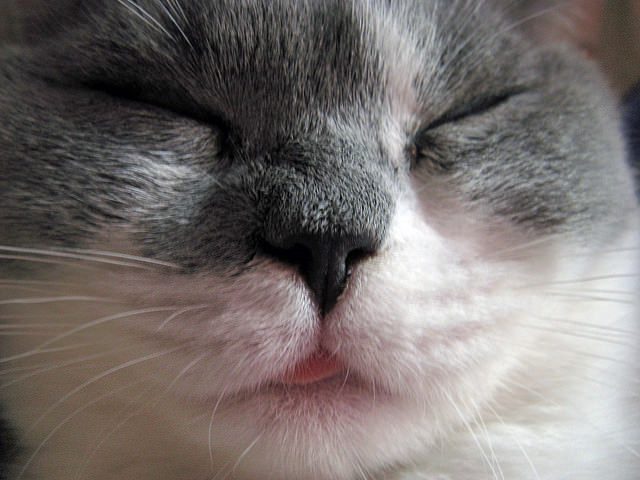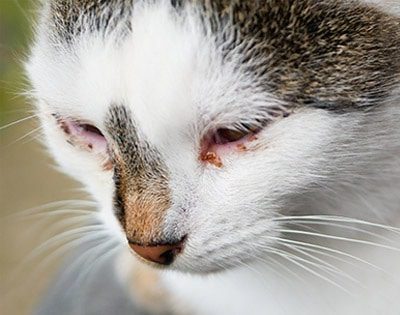Are you a cat lover? Do you want to ensure your furry friend's health and happiness? Then, get ready to dive into the fascinating world of feline asthma! Understanding this topic is not only essential for the well-being of your beloved kitty but also for your peace of mind. Did you know that approximately 1 in 200 cats suffer from asthma? That means there's a high chance your feline companion could be affected too. In this article, we will explore all there is to know about asthma in cats, from its causes and symptoms to the best ways to manage and treat it. By the end, you'll be equipped with the knowledge and tools to keep your kitty wheeze-free and living their best life. So, let's embark on this enlightening journey together!
Key Takeaways:
- Asthma is a common respiratory condition in cats, characterized by wheezing and difficulty breathing.
- Exposure to allergens such as dust mites, pollen, and cigarette smoke can trigger asthma attacks in cats.
- Treatment options for feline asthma include medications like bronchodilators and corticosteroids.
- Environmental modifications, such as reducing exposure to potential triggers, can help manage and prevent asthma attacks in cats.
- Regular veterinary check-ups are crucial for monitoring the condition and adjusting treatment plans accordingly.
Understanding "When Kitty Wheezes: All About Asthma in Cats"
How Asthma Affects Cats' Breathing: Explained
Asthma is a respiratory condition that can affect cats, just like it does humans. When a cat has asthma, their airways become inflamed and narrow, making it difficult for them to breathe properly. This can cause wheezing sounds and coughing. The inflammation in the airways can also lead to mucus production, further obstructing the flow of air.
During an asthma attack, a cat may struggle to take deep breaths and may even have difficulty exhaling. This can be scary for both the cat and their owner. It's important to understand that asthma attacks in cats can vary in severity, with some cats experiencing mild symptoms while others may have more severe episodes.
Uncovering the Triggers of Asthma Attacks in Cats
Asthma attacks in cats can be triggered by various factors. These triggers can vary from cat to cat, so it's important to identify what specifically sets off your feline friend's asthma. Common triggers include:
- Dust and dust mites
- Pollen from plants
- Mold spores
- Cigarette smoke
- Fragrances or strong odors
- Exercise or excitement
If you notice that your cat tends to have asthma attacks after exposure to any of these triggers, it's best to try and minimize their contact with them as much as possible.
Recognizing Common Symptoms of Asthma in Cats
It's important to be able to recognize the signs of asthma in cats so that you can seek appropriate treatment for your furry friend. Common symptoms of asthma in cats include:
- Wheezing sounds while breathing
- Coughing, especially after physical activity or excitement
- Rapid breathing or shortness of breath
- Open-mouth breathing
- Lethargy or decreased activity levels
- Loss of appetite
If you notice any of these symptoms in your cat, it's important to consult with a veterinarian for a proper diagnosis and treatment plan.
Treatments for Cats with Asthma: What You Need to Know
When it comes to treating asthma in cats, there are several options available. Your veterinarian will determine the best course of action based on the severity of your cat's condition. Treatment options may include:
- Inhaled medications: These medications are delivered through an inhaler or nebulizer and help to open up the airways.
- Oral medications: In some cases, oral medications may be prescribed to reduce inflammation and control symptoms.
- Avoidance of triggers: Minimizing exposure to known triggers can help prevent asthma attacks.
- Dietary changes: Some cats may benefit from a specialized diet that supports respiratory health.
Creating an Asthma-Friendly Environment for Your Cat: Tips and Tricks
To create an asthma-friendly environment for your cat, there are several steps you can take:
- Keep the house clean and free from dust by regularly vacuuming and dusting surfaces.
- Avoid smoking or exposing your cat to secondhand smoke.
- Use unscented litter and cleaning products to minimize exposure to strong odors.
- Provide good ventilation in your home by opening windows or using air purifiers.
By implementing these measures, you can help reduce the likelihood of asthma attacks and improve your cat's overall respiratory health.
Preventing and Managing Asthma Attacks in Cats: Helpful Tips
To prevent and manage asthma attacks in cats, it's important to follow these tips:
- Administer medications as prescribed by your veterinarian and ensure proper technique when using inhalers or nebulizers.
- Monitor your cat's breathing patterns and seek veterinary care if you notice any changes or worsening symptoms.
- Avoid exposing your cat to known triggers as much as possible.
- Create a calm and stress-free environment for your cat, as stress can worsen asthma symptoms.
With proper management and care, cats with asthma can lead happy and healthy lives. Regular check-ups with a veterinarian are essential to monitor their condition and make any necessary adjustments to their treatment plan.
How Asthma Affects Cats' Breathing: Explained
Asthma is a respiratory condition that can affect cats just like it affects humans. When a cat has asthma, their airways become inflamed and narrow, making it difficult for them to breathe properly. This can lead to wheezing, coughing, and difficulty in exhaling. The exact cause of feline asthma is still unknown, but it is believed to be triggered by allergens such as dust mites, pollen, or certain types of food. When these allergens are inhaled by the cat, their immune system overreacts and causes inflammation in the airways.
Understanding the Anatomy of a Cat's Respiratory System
To understand how asthma affects a cat's breathing, it's important to have a basic understanding of their respiratory system. A cat's respiratory system consists of the nose, throat (pharynx), windpipe (trachea), and lungs. The air enters through the nose and travels down the throat into the windpipe before reaching the lungs. In a healthy cat, the airways are open and allow for easy passage of air. However, when a cat has asthma, these airways become constricted due to inflammation and excess mucus production.
The Role of Bronchial Tubes in Asthma
The bronchial tubes play a crucial role in asthma as they are responsible for carrying air in and out of the lungs. When an asthmatic cat inhales an allergen, these tubes become irritated and inflamed. As a result, they produce excess mucus which further narrows the already constricted airways. This narrowing makes it harder for oxygen to reach the lungs and carbon dioxide to be expelled from the body.
Overall, asthma significantly impacts a cat's ability to breathe properly due to inflammation and constriction of the airways. Understanding the anatomy of a cat's respiratory system and the role of bronchial tubes helps in comprehending how asthma affects their breathing.
Uncovering the Triggers of Asthma Attacks in Cats
Asthma attacks in cats can be triggered by various factors, and identifying these triggers is crucial for managing the condition effectively. Some common triggers include:
Allergens
Allergens are substances that can cause an allergic reaction in cats with asthma. Common allergens include dust mites, pollen, mold spores, and certain types of food. When a cat with asthma is exposed to these allergens, it can lead to inflammation in their airways and trigger an asthma attack.
Environmental Factors
Environmental factors such as cigarette smoke, strong odors from cleaning products or perfumes, and dusty environments can also trigger asthma attacks in cats. These irritants can further inflame the already sensitive airways of asthmatic cats.
Stress and Anxiety
Stress and anxiety can also play a role in triggering asthma attacks in cats. Just like humans, cats can experience stress due to changes in their environment or routine, loud noises, or conflicts with other animals. This stress can worsen their asthma symptoms and increase the likelihood of an attack.
Identifying the triggers that affect your cat's asthma is essential for preventing future attacks. By minimizing exposure to allergens, creating a clean and smoke-free environment, and reducing stressors, you can help manage your cat's condition effectively.
Recognizing Common Symptoms of Asthma in Cats
Wheezing and Coughing
One of the most common symptoms of asthma in cats is wheezing. This can be described as a high-pitched whistling sound that occurs when your cat breathes. If you notice your cat making this noise, it could be a sign of asthma. Another symptom to look out for is coughing. Cats with asthma may have frequent coughing fits, which can be dry or produce mucus.
Difficulty Breathing and Rapid Breathing
Asthma can cause difficulty breathing in cats. You may notice that your cat is breathing more rapidly than usual or struggling to catch their breath. They may also exhibit signs of labored breathing, such as using their abdominal muscles to breathe or extending their neck while breathing.
Other Possible Symptoms
- Sneezing or nasal discharge
- Lethargy or decreased activity levels
- Loss of appetite
- Weight loss
- Open-mouthed breathing (in severe cases)
If you observe any of these symptoms in your cat, it's important to consult with a veterinarian for an accurate diagnosis and appropriate treatment plan.
Treatments for Cats with Asthma: What You Need to Know
If your cat has been diagnosed with asthma, there are several treatment options available to help manage their condition and improve their quality of life.
Inhaled Medications
The primary treatment for feline asthma involves the use of inhaled medications. These medications are typically delivered through a device called an inhaler, which allows the medication to be directly administered into the cat's lungs. Inhaled medications help to reduce inflammation and open up the airways, making it easier for your cat to breathe.
Environmental Modifications
Making changes to your cat's environment can also help manage their asthma symptoms. This includes reducing exposure to potential triggers such as dust, pollen, and cigarette smoke. Keeping your home clean and free of allergens, using air purifiers, and avoiding the use of strong cleaning products can all contribute to creating an asthma-friendly environment for your cat.
Other Treatment Options
- Oral medications: In some cases, oral medications may be prescribed to control inflammation and reduce symptoms.
- Dietary changes: Certain dietary modifications, such as switching to a hypoallergenic or grain-free diet, may benefit cats with asthma.
- Stress reduction: Stress can worsen asthma symptoms in cats. Providing a calm and stress-free environment can help alleviate their condition.
It's important to work closely with your veterinarian to determine the most appropriate treatment plan for your cat based on their individual needs and medical history.
Creating an Asthma-Friendly Environment for Your Cat: Tips and Tricks
Ensuring that your cat has a safe and comfortable environment is crucial in managing their asthma. Here are some tips to create an asthma-friendly space:
Reduce Allergens
To minimize allergens that could trigger asthma attacks in your cat, regularly clean their bedding, vacuum carpets and upholstery, and dust surfaces. Opt for hypoallergenic bedding materials and consider using air purifiers with HEPA filters to improve indoor air quality.
Avoid Smoke Exposure
Cigarette smoke is a common trigger for feline asthma. Avoid smoking indoors and keep your cat away from areas where others smoke. If you or someone in your household smokes, consider quitting or smoking outside to protect your cat's respiratory health.
Provide Clean Air
- Keep windows closed during high pollen seasons to prevent allergens from entering the house.
- Avoid using strong cleaning products with harsh chemicals that can irritate your cat's airways.
- Ensure proper ventilation in your home to maintain fresh air circulation.
By implementing these measures, you can create an environment that minimizes potential triggers and promotes better respiratory health for your cat with asthma.
Preventing and Managing Asthma Attacks in Cats: Helpful Tips
While it may not be possible to completely prevent asthma attacks in cats, there are steps you can take to reduce their frequency and severity:
Avoid Environmental Triggers
Identify and minimize exposure to common environmental triggers such as dust, mold, pollen, and certain cleaning products. Keep your cat indoors during high pollen seasons and use pet-safe cleaning products that won't irritate their airways.
Maintain a Healthy Weight
Obesity can worsen asthma symptoms in cats. Ensure that your cat maintains a healthy weight through a balanced diet and regular exercise. Consult with your veterinarian for guidance on appropriate portion sizes and suitable exercise routines for your cat's age and condition.
Prompt Veterinary Care
- If you notice any changes in your cat's breathing patterns or suspect an asthma attack, seek veterinary care immediately.
- Follow the prescribed treatment plan provided by your veterinarian diligently to manage the condition effectively.
- Schedule regular check-ups to monitor your cat's respiratory health and make any necessary adjustments to their treatment plan.
By being proactive in managing your cat's asthma, you can help minimize the impact of the condition on their overall well-being and ensure they lead a comfortable and happy life.
In conclusion, asthma is a common respiratory condition that can affect cats. It is important for cat owners to recognize the symptoms and seek veterinary care to manage and treat their cat's asthma effectively. With proper care and attention, cats with asthma can live happy and healthy lives.
How do you treat wheezing asthma in cats?
In order to treat feline asthma, vets typically provide corticosteroids to decrease lung inflammation, along with bronchodilators to widen the airways. These medications are available in oral, inhaled, and injectable forms.
How long do cats with asthma live?
As long as your cat's asthma is properly controlled, they can expect to live a normal lifespan.
What triggers asthma attacks in cats?
Although the exact causes of asthma are usually unknown, potential allergens that are believed to trigger asthma include tobacco smoke, dusty cat litter, fumes from cleaning products and sprays, pollen from plants, mold, dust mites, smoke from fires and candles, and even certain foods.
What happens if cat asthma goes untreated?
Absolutely. Just like untreated asthma can be deadly in humans, it can have the same fatal consequences in cats.
Will Benadryl help my cats asthma?
Typically, antihistamines are not the initial choice of treatment for cats with environmental allergies, and they are never prescribed for allergies like food allergies.
How much does it cost to treat asthma in cats?
The cost of managing asthma depends on whether owners can afford to eliminate other diseases or try safer medication options. At the very least, owners should be prepared to pay $250 for a basic diagnosis and anywhere from $10 to $250 per month for medication.

















